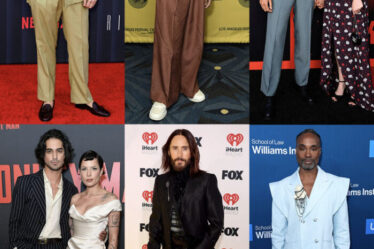
Luxury titans Kering and LVMH and fast-fashion giant H&M Group are among a handful of companies pioneering an effort to develop a gold-standard framework for how businesses can protect nature.
The companies are test-driving new guidance developed by the nature-focused Science-Based Targets Network (SBTN) that aims to create a standard for companies to assess their biodiversity risks and impact, and then set out a plan to address them.
The effort aims to replicate the success of the Science-Based Targets initiative, a separate organisation that has become the de facto arbiter of corporate climate commitments.
It reflects growing awareness among businesses, policymakers and investors that the climate crisis cannot be solved without preventing and reversing nature loss, and the ongoing biodiversity crisis carries its own financial risks.
What Are Science-Based Targets for Nature?
Nature conservation is harder to define and measure than greenhouse gas emissions, but SBTN is aiming to establish a framework to change this.
This week, it launched guidelines for goal-setting around land and water impacts. Kering, LVMH and H&M are among 17 companies piloting the programme, with a view to having approved targets in place this year. Other companies will be able to get targets verified from 2024.
Commitments should include plans to reduce freshwater use in areas of scarcity and pollution entering waterways, as well as goals to ensure no more grasslands, wetlands or forests are converted for economic activity, reduce the amount of land used for agriculture and restore degraded ecosystems.
The idea is to help companies move towards a broad goal agreed by global leaders at a UN summit late last year to protect 30 percent of the world’s land and sea by 2030.
SBTN is planning to release further guidance to help companies set goals to protect the oceans and prevent biodiversity loss.
What Does This Mean for Fashion?
The industry has a big role to play in protecting and restoring nature. Failing to do so also comes with big risks to supply chains and access to natural resources.
More than 300 million trees are cut down every year to make materials like viscose, according to forest conservation campaign group Canopy. Leather supply chains have been linked to deforestation in the Amazon, while crops like cotton can require unsustainable levels of pesticides and water.
Big brands have thrown their weight behind pledges to tackle the industry’s impact on nature. They’ve committed tens of millions of dollars to restore tracts of land, forest and water by the end of the decade and they’ve launched programmes to support regenerative farming practices in their supply chains.
The Fashion Pact, a CEO-led industry group, has been working on the issue since 2020, helping members map their biodiversity impact and develop strategies to reduce their impact on nature. The fact that several fashion businesses were selected to participate in SBTN’s pilot for nature targets reflects work they’ve already done to understand their footprint.
But it’s a complicated challenge. Healthy soil and water levels will look different for a cotton farm in India than in China or the US for instance. Due to complex and often opaque supply chains, most fashion brands couldn’t say where the fabrics they use are spun and dyed, let alone where the materials come from.
So far, only around 40 percent of the Fashion Pact’s members have set biodiversity targets and 21 percent have put specific biodiversity strategies in place, though this is a significant increase from a few years ago. Frameworks like SBTN’s could help accelerate that pace.
Will It Make a Difference?
Developing and setting targets are necessary first steps to reduce fashion’s impacts on nature. They enable companies to set strategies, focus action and measure and report progress in a standardised way.
But targets also need to translate into action — and fast — to meet the UN’s 2030 goals. Voluntary corporate commitments don’t have a great track record on this front.
For instance, hundreds of fashion companies have now set or committed to set science-based climate targets, yet the industry’s emissions keep rising. Poor quality, unverified data is also a challenge for any effort to measure and track environmental impact.
Science-based targets for nature are a helpful tool to improve transparency and accountability, but their impact remains to be seen.
For more BoF sustainability coverage, sign up now for our Weekly Sustainability Briefing by Sarah Kent.



